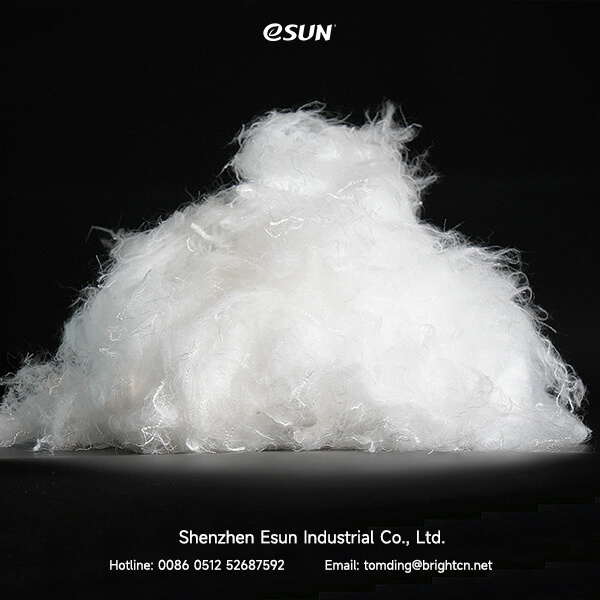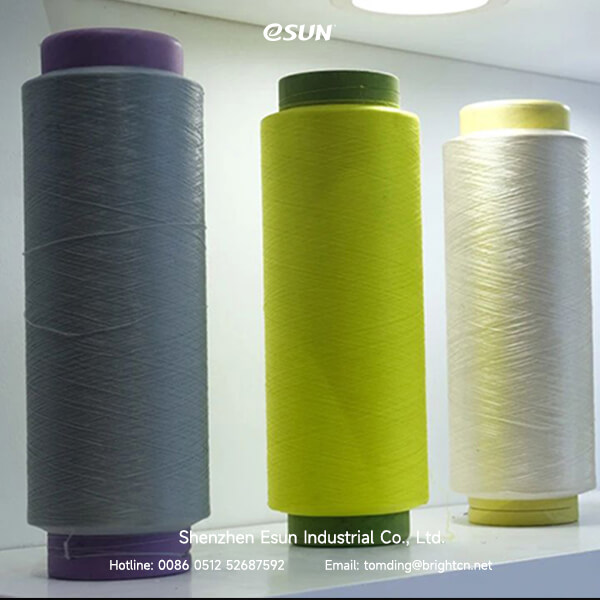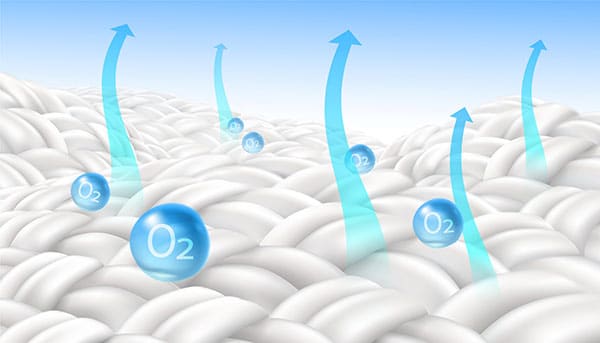Types of PLA Fiber
PLA fibers are primarily categorized into two types: short fibers and filament yarns.
PLA Short Fibers
These fibers possess mechanical properties such as strength and elasticity. They can be used in pure spun products or blended with other fibers like cotton, wool, linen, lyocell, and modal. eSUN offers various PLA short fiber products, including:
- Conventional single-component fibers
- Super short cut staple
- Bi-component fibers
- Three-dimensional crimped fibers
- Special cross-section fibers
- Functional fibers

PLA Filament Yarns
PLA filament yarns consist of multiple long monofilaments that are stretched, twisted, or deformed. A single strand may contain dozens of monofilaments, known as PLA composite filaments, which can be spun into differentiated PLA fibers. PLA monofilaments, due to their unique properties, are widely used in medical sutures, fishing lines, and tea bags.

Properties of PLA Fiber
Mechanical Properties
PLA fibers have a breaking strength ranging from 3.2 to 4.9 cN/dtex, surpassing that of natural cotton fibers. Their dry-state breaking elongation rate is comparable to nylon and wool, and it increases in the wet state, indicating high strength and good extensibility.
Biodegradability
Under normal temperature and humidity, PLA fibers and their products remain stable. In natural environments with specific conditions, microorganisms can completely degrade PLA into carbon dioxide and water. In industrial composting conditions (58°C, 98% humidity, and microbial presence), PLA products can decompose within 3-6 months. eSUN’s PLA fibers have received certifications from DIN (Germany) and BPI (USA) for compostability and degradability.
Biocompatibility and Hypoallergenic Nature
Derived from lactic acid, an endogenous substance in the human body, PLA fibers have a pH value similar to human skin. This gives them excellent biocompatibility, skin affinity, and non-allergenic properties, making them suitable for biomedical applications.
Antibacterial and Anti-mite Properties
The weak acidity of lactic acid on the surface of PLA fibers imparts natural antibacterial properties, effectively inhibiting the growth of mites, mold, and odors.
Wearability
- Drape: PLA fibers have a low initial modulus and small drape coefficient, providing good draping properties.
- Moisture Absorption and Breathability: While PLA fibers have poor moisture absorption, they offer good breathability.
- Crease Recovery: With an elastic recovery rate of up to 93% when stretched by 5%, PLA fiber fabrics exhibit good crease recovery.
- Abrasion Resistance and Pilling: PLA fibers have slightly better abrasion resistance than polyester, though fabrics may experience pilling.
- Thermal Insulation: Lightweight PLA fibers can quickly dry after getting wet. In winter, they offer better thermal insulation than cotton and polyester; in summer, they provide excellent moisture permeability and quick-drying properties.

Other Properties
- UV Resistance: The molecular structure of PLA fibers contains numerous C—C and C—H bonds, which do not absorb light with wavelengths less than 290nm, granting them good UV resistance.
- Self-extinguishing and Low Smoke: PLA fibers are not easily flammable, self-extinguish upon removal from fire, and emit no black smoke or toxic gases, ensuring safety during use.
Applications of PLA Fiber
Sanitary Materials
PLA non-woven fabrics have smooth surfaces, do not absorb moisture, and offer better fluidity, dryness, biocompatibility, and non-allergenicity. They are suitable for sanitary napkins, diapers, makeup remover pads, wet wipes, face towels, and other disposable sanitary products. Due to their biodegradability, PLA fibers help address the “white pollution” problem caused by disposable medical and sanitary products.
Apparel Fabrics
PLA fibers possess physical properties similar to polyester materials, can be shaped, have good strength and dimensional stability, and do not irritate the skin. They are easy to wash and dry and can be functionalized during spinning by adding other materials to achieve moisture absorption, UV protection, and other features. Applications include:
- Sports and Leisure Clothing: DTY low-elastic yarn knitted fabrics for polo shirts, T-shirts, etc.
- Underwear: Interwoven or blended fabrics that retain better shape and safety.
- Children’s Clothing: Non-allergenic, skin-friendly, and flame-retardant properties are essential for modern children’s clothing.
Home Textiles and Toy Fillings
- Fillings for Quilts and Pillows: Hollow PLA short fibers can be used in pure form or blended with other fibers, replacing existing polyester-related fillers.
- Bedding Fabrics: Interwoven or blended fabrics that are skin-friendly, non-irritating, non-allergenic, and offer better dimensional stability than all-cotton fabrics.
Medical Supplies
PLA fibers are used in masks, protective clothing, medical gauze, bandages, sheets, and high-end antibacterial products due to their biocompatibility and biodegradability.
Other Applications
PLA fibers find applications in packaging materials, agricultural cloths, sand barriers, filter bundles, decorative board adhesives, and more.
eSUN’s Role in PLA Fiber Development
eSUN has mastered the chemical recycling technology of PLA and industrialized it, establishing a green closed-loop industrial chain for PLA fiber products. This advancement enables efficient recycling and utilization of resources, further promoting sustainable development in the textile industry.
With the growing global emphasis on biobased materials, PLA fiber is poised to become a key product in the textile and non-woven fabric industries of the 21st century.





